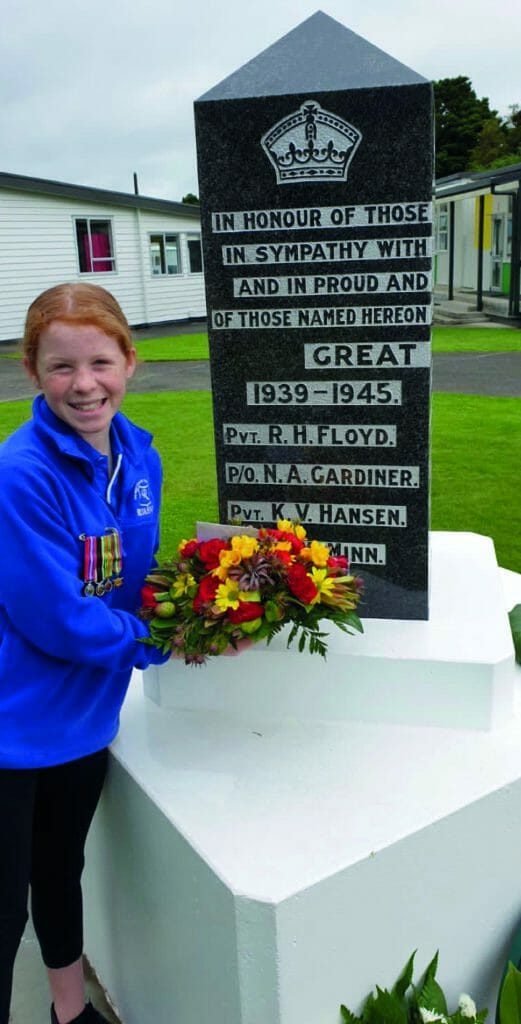
When children from Long Marton School visited the village war memorial as part of their activities connected with Remembrance Day, they uncovered a mystery which led them half way around the world.
As they explored the churchyard, following the service, they found two Commonwealth war graves — but neither man’s name appeared on the memorial to those who had lost their lives.
One, that of Geoffrey Allan, of Long Marton, bore the date 11th November, 1947.
It turned out he was related to many families in the area, and the children learned through online research that he had died after the Second World War in a training accident.
However, the other gravestone presented a bigger conundrum.
Pilot Officer N. A. Gardiner, of the Royal New Zealand Air Force, had no known family links to the area. The children were fascinated — why was a man from the other side of the world buried in the village?
It was discovered on the internet that the man was called Noble Gardiner and came from Dannevirke, on New Zealand’s North Island.
Local inquiries revealed he and his brother had a friend in the village called Hugh Eggleston — who has great-grandchildren currently at the school.
Noble and his brother spent much of their leave in Long Marton, helping on the Fisher family farm. Enid Fisher, daughter of the occupants during the war, recalls his brother coming back to visit after the conflict.
The children and their teacher, John Davis, continued to carry out online research which was followed by the local community.
They found Noble completed his training in Manitoba and Saskatchewan, Canada, in 1941, and joined 53 Squadron, which was engaged in anti-submarine patrols lasting up to 17 hours.
In July, 1943, his squadron was based on Thorney Island on the South Coast, flying Liberator bombers on missions over the Bay of Biscay and south and west of Ireland.
The squadron took part in many actions, sinking a U-boat and collectively winning three Distinguished Flying Crosses and two Distinguished Flying Medals on missions where single Liberators fought off four and seven Junkers 88s.
On 28th July, Noble Gardiner was on board Liberator F of 53 Squadron when it took off from Thorney Island, and at 3-30am it crashed near Tisbury, Wiltshire.
The aircraft was destroyed and there no survivors.
In remembrance of the happy times spent in the village and helping on the farm — now a brewery — Noble’s brother asked that he be buried in Long Marton.
The children came to believe that Long Marton reminded the Gardiners of where they were from. Dannevirke is a sheep and dairy farming area, nestled up against a mountain range and with a strong sense of community.
Showing the power of the internet, one article in a New Zealand newspaper, published that same week, revealed that Noble Gardiner is remembered on the Te Rehunga war memorial in his home town, which had just been moved to the Ruahine School.
Contact was made with the school’s principal, Sarah McCord, who was very moved to hear that Noble had not been forgotten about in Long Marton.
She put the class in touch with Noble’s family, as his great-greatniece Abbey Ross-Veale is the latest of the family to attend the school.
Abbey had laid a wreath at the memorial at a dedication ceremony after it was moved to the school from its former home in a church.
The Long Marton pupils have sent the information they have found about Noble Gardiner to his family, and the class will be marking Anzac Day — the main commemorative event for the armed forces of New Zealand and Australia — in future years by laying flowers at his grave.
Long Marton School head Rachel Smith said: “This has been a fabulous adventure that has involved the whole community as the story has unfolded.
“It has engaged and inspired the children and they have learned so much about combat in the Second World War, about life in New Zealand but most importantly the strength and value of family and friends.”































